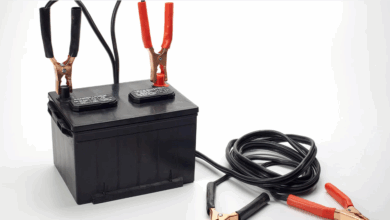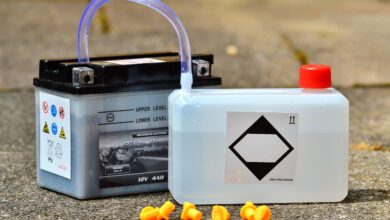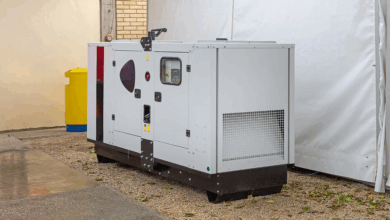Best Generators Rated

Power When You Need It: Understanding and Choosing the Best Generators Rated for Your Needs
Life in the 21st century is inextricably linked to electricity. From keeping our food cold and our homes warm (or cool) to powering our communications and vital medical equipment, a consistent power supply is no longer a luxury – it’s a necessity. But power outages happen. Whether caused by severe weather, grid overload, or unexpected equipment failures, losing power can range from a minor inconvenience to a serious threat.
This is where generators come in. Acting as reliable sources of backup power, they can keep the lights on, appliances running, and essential systems functioning when the grid goes dark. However, the world of generators is vast, with options ranging from small, portable units to large, permanent installations. Finding the "best rated" generator isn’t about discovering a single, universally superior model; it’s about identifying the generator that is best rated for your specific needs based on critical factors and intended use.
This article will guide you through the essential aspects of choosing a generator, breaking down what makes a generator "best rated" in different scenarios, exploring the main types available, and helping you make an informed decision to ensure you have power exactly when you need it.
Why You Might Need a Generator
Before diving into the details, let’s consider the common reasons people invest in generators:
- Home Backup: Protecting against power outages to keep essential appliances (refrigerator, furnace/AC fan, lights, well pump) running, or even powering the entire house.
- Outdoor Activities: Providing power for camping, RVing, tailgating, or outdoor events where grid power is unavailable.
- Job Sites: Powering tools and equipment in remote construction areas.
- Emergency Preparedness: Ensuring critical medical devices, communication systems, and comfort are maintained during prolonged emergencies.
- Remote Living: As a primary power source in off-grid locations.
What Makes a Generator "Best Rated"? Key Factors to Consider
When experts or users rate generators, they typically evaluate them based on several crucial criteria. Understanding these factors is key to finding the generator that ranks highest for you:
- Power Output (Watts): This is perhaps the most fundamental factor. Generators are rated by the amount of power they can produce, measured in watts. You’ll see two wattage ratings:
- Running Watts (or Rated Watts): The continuous power the generator can supply.
- Starting Watts (or Peak Watts): The extra surge of power needed for a few seconds to start motor-driven appliances (like refrigerators, pumps, or power tools). The "best" generator for you must have sufficient running watts to cover your continuous needs and adequate starting watts for the largest appliance you plan to start. Calculating your power needs is the first critical step.
- Fuel Type and Efficiency: Generators run on various fuels:
- Gasoline: Most common, widely available, but has a limited shelf life and can be dangerous to store in large quantities.
- Propane: Burns cleaner, stores well for long periods, readily available in tanks, but may be less fuel-efficient than gasoline.
- Diesel: More fuel-efficient for larger generators, engines are typically more durable, but units are often more expensive, louder, and require specific maintenance.
- Natural Gas: Used primarily for standby generators connected directly to a home’s gas line, offering a continuous fuel supply but requiring professional installation.
- Dual Fuel: Many portable generators offer the flexibility to run on either gasoline or propane.
- Solar/Battery: Increasingly popular for smaller needs and clean, quiet power (often called portable power stations).
The "best rated" might offer flexibility (dual fuel) or be highly efficient for long runtimes on a single tank/cylinder.
- Generator Type: The design significantly impacts performance, cost, and use case:
- Conventional Portable Generators: Traditional design, relatively affordable, good power output for their size, but typically louder and produce "dirty" power (voltage fluctuations) not ideal for sensitive electronics. Rated well for job sites and basic backup.
- Inverter Generators: Utilize advanced technology to produce clean, stable power (like grid power), making them safe for laptops, phones, and sensitive medical equipment. They are also significantly quieter, more fuel-efficient, and often more compact. Rated highly for camping, RVing, and backing up sensitive home electronics. Usually have lower power output than conventional generators of similar size and are more expensive.
- Standby Generators: Permanently installed outside a home and wired directly into the electrical system. They turn on automatically within seconds of a power outage, often powering the entire house. They run on natural gas or propane. Rated as the "best" for seamless, whole-house backup and convenience, but are the most expensive option.
- Noise Level: Measured in decibels (dB), generator noise varies dramatically. Conventional portables can be 70-80 dB or higher (like a loud vacuum or busy street), while inverter generators often operate in the 50-60 dB range (like normal conversation). If you’re using a generator in a campground, residential area, or for long periods, a lower noise level is a major plus and contributes significantly to user satisfaction ratings.
- Runtime: How long a generator can run on a single tank of fuel at a certain load. This is crucial for extended outages or overnight use. A generator rated "best" for long-term backup will have a good runtime or flexible fueling options.
- Features and Convenience: Modern generators offer helpful features:
- Electric Start: Much easier than pull-starting.
- Multiple Outlets: Various types (120V, 240V, USB, RV outlets).
- Automatic Shut-off: Low oil or carbon monoxide detection.
- Fuel Gauge: Easily monitor fuel levels.
- Parallel Capability: Some inverter generators can connect to another identical unit to double the power output.
- Remote Monitoring: Standby generators often have smartphone apps.
- Brand Reputation and Reliability: While specific models vary, some brands have a long-standing reputation for durability, customer service, and consistent performance. Researching brand reviews adds another layer to finding a "best rated" generator.
- Price: Generators represent a significant investment. The "best" value isn’t always the cheapest, but finding a generator that meets your needs reliably within your budget is key.
Understanding the "Best Rated" Categories
Given the factors above, "best rated" generators often fall into categories based on their primary strengths and intended use:
- Best Rated for Home Backup (Partial/Essential Circuits): Often a high-wattage portable or a mid-size inverter generator, focusing on sufficient running watts for critical appliances and potentially electric start.
- Best Rated for Whole House Backup: Almost exclusively standby generators due to their high power output, automatic operation, and direct wiring.
- Best Rated for Camping/RVing: Inverter generators are usually top-rated here due to their quiet operation, portability, clean power for electronics, and fuel efficiency. Parallel capability can be a plus.
- Best Rated for Job Sites: Rugged, high-wattage portable generators (often conventional) are preferred for their durability and ability to power tools, even if they are louder.
- Best Rated for Sensitive Electronics: Inverter generators are definitively the best rated in this category due to their low Total Harmonic Distortion (THD).
- Best Rated for Value: This is subjective but often involves finding a portable conventional generator that offers good power output and essential features at a competitive price point, understanding the trade-offs (noise, power quality).
Choosing the Right Generator for You
To find your best-rated generator, follow these steps:
- Calculate Your Power Needs: List the appliances you want to power. Find their running and starting wattages (usually on a label). Sum the running watts for items you’ll use simultaneously. Add the single highest starting wattage to this sum. This gives you a target for the generator’s running and starting watts. Err on the side of slightly more power than you think you need.
- Determine Your Use Case: Is it primarily for occasional home emergencies, regular camping trips, or a permanent backup solution? This guides you toward the right type (portable, inverter, standby).
- Consider Fuel and Runtime: How long do you anticipate needing power? What fuel is most accessible and convenient for you?
- Evaluate Noise Tolerance: Where will the generator be located? Are there noise restrictions or close neighbors?
- Set a Budget: This helps narrow down options within the chosen type and power range.
- Read Reviews for Specific Models/Brands: Once you’ve identified the type and wattage you need, then look at reviews for specific models within that category from reputable brands known for reliability and performance based on user experiences.
Maintenance and Safety: Non-Negotiables for the "Best" Experience
No matter how highly rated a generator is, improper use or maintenance can render it useless or dangerous.
- Read the Manual: Always follow the manufacturer’s instructions for operation and maintenance.
- Carbon Monoxide (CO) Safety: Generators produce lethal CO gas. NEVER run a generator indoors, in a garage, or near windows or vents. Place it at least 20 feet away from your home and point the exhaust away. Use CO detectors in your home.
- Proper Fuel Storage: Store fuel safely in approved containers away from living spaces and ignition sources.
- Regular Maintenance: Check oil levels, change oil, clean or replace air filters, check spark plugs, and run the generator periodically (under load if possible) to keep it in good working order. Fuel stabilizer is your friend.
- Electrical Safety: Use heavy-duty, outdoor-rated extension cords. Avoid overloading the generator. If connecting to your home’s electrical system, use a transfer switch installed by a qualified electrician to prevent backfeeding power onto the grid, which is dangerous for utility workers.
Conclusion
Finding the "best generators rated" isn’t about chasing a single top ranker, but about matching a generator’s capabilities and features to your specific power needs, use case, and priorities. By understanding wattage requirements, the differences between generator types, fuel options, noise levels, and key features, you can effectively evaluate models and choose the one that is best rated for you.
Investing in a generator is investing in peace of mind and preparedness. Take the time to assess your needs, research the options within the relevant categories, and prioritize safety and maintenance. With the right generator, you can confidently face unexpected power outages, knowing you have a reliable source of electricity to keep your life running smoothly.
FAQs: Your Generator Questions Answered
Q1: How do I calculate the wattage I need?
A1: List all the appliances you want to run simultaneously. Find the running watts for each and add them up. Then, identify the appliance with the highest starting watts and add that single value to your running watts total. This gives you the minimum starting wattage needed. Always add a buffer (10-20%) for safety.
Q2: What’s the difference between running watts and starting watts?
A2: Running watts (or rated watts) is the continuous power a generator can supply. Starting watts (or peak watts) is the temporary surge of power needed for a few seconds to start appliances with electric motors (like refrigerators, air conditioners, pumps) before they settle into their lower running wattage.
Q3: Are inverter generators worth the extra cost?
A3: Generally, yes, if quiet operation, clean power (safe for sensitive electronics), and fuel efficiency are important to you. For camping, RVing, or backing up electronics like computers and medical devices, they are highly recommended and often considered "best rated" for these specific uses despite the higher price tag.
Q4: Can I run a generator indoors?
A4: ABSOLUTELY NOT. Generators produce lethal carbon monoxide (CO) gas. They must always be operated outdoors, at least 20 feet away from your home, doors, and windows, with the exhaust pointed away. Use CO detectors inside your home.
Q5: What kind of maintenance do generators need?
A5: Regular maintenance is crucial. This typically includes checking and changing the oil (following the break-in period and then regularly), checking and cleaning or replacing the air filter, checking the spark plug, inspecting fuel lines, and running the generator periodically (ideally every 3-6 months under a light load) to keep components lubricated and fuel fresh (using stabilizer if needed).
Q6: What is a dual-fuel generator?
A6: A dual-fuel generator is designed to run on either gasoline or propane (LPG). This provides flexibility, allowing you to use whichever fuel is more readily available or convenient at the time. Propane stores for longer periods than gasoline.
Q7: How long can a generator run continuously?
A7: This varies greatly depending on the generator’s size, fuel type, fuel tank capacity, and the load it’s powering. Runtimes can range from a few hours to 10-12 hours or more on a single tank. Standby generators connected to a natural gas line can run indefinitely as long as the gas supply is active. Always check the manufacturer’s specifications for runtime estimates at various load levels.




![How to Bypass CO Sensor on Generator – [4-Step Safety Guide]](https://www.generator411.com/wp-content/uploads/2025/08/co-sensor-on-generator-390x220.png)